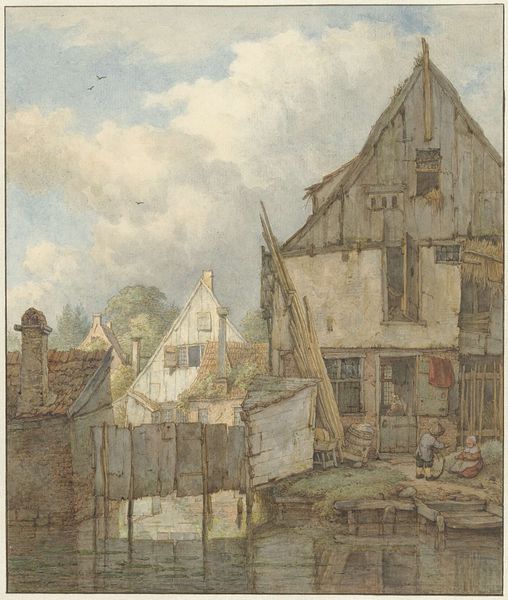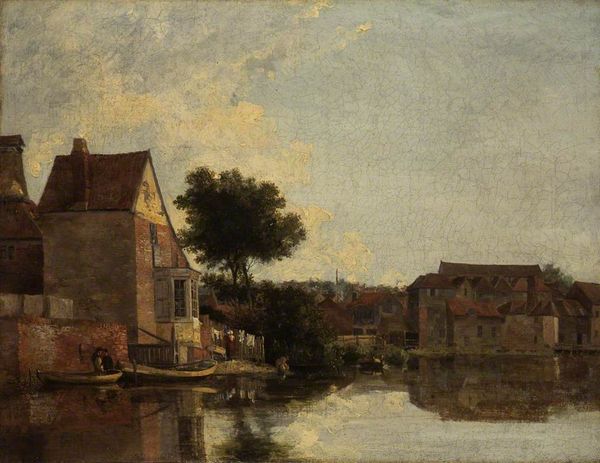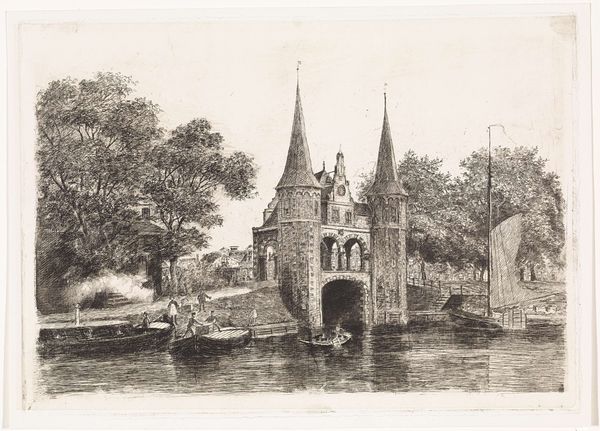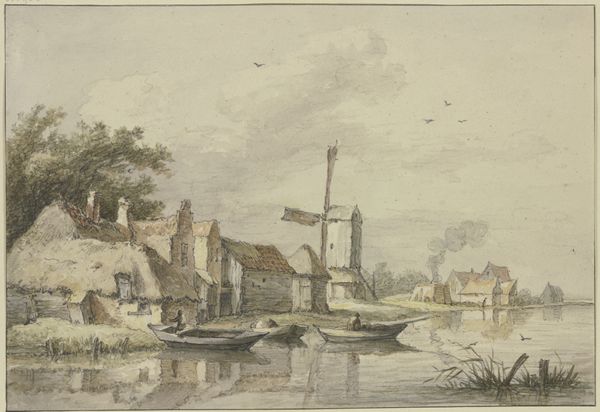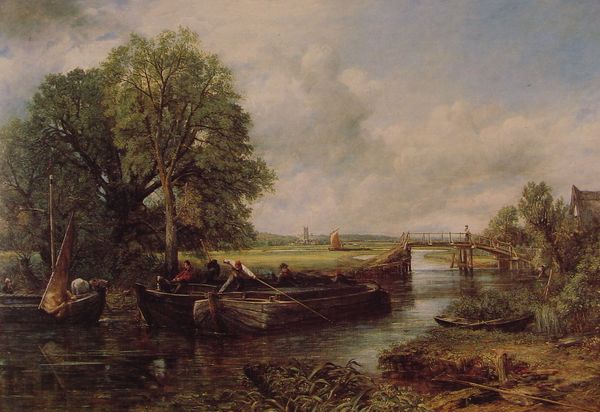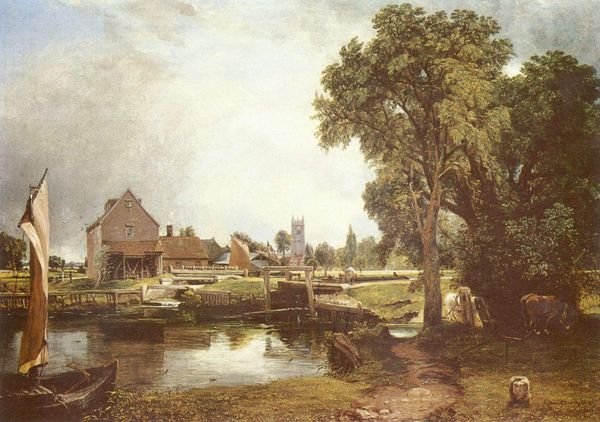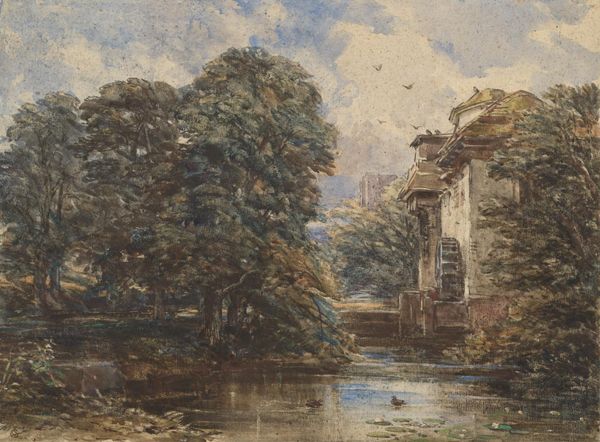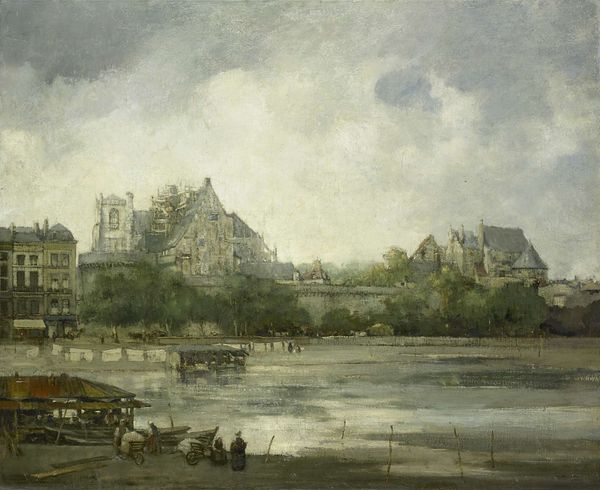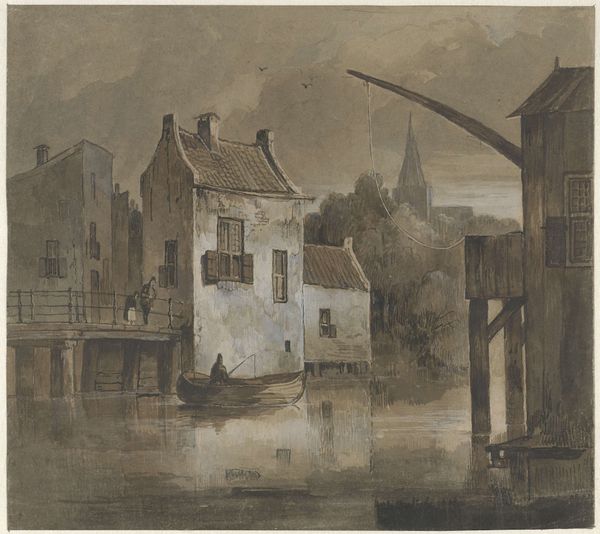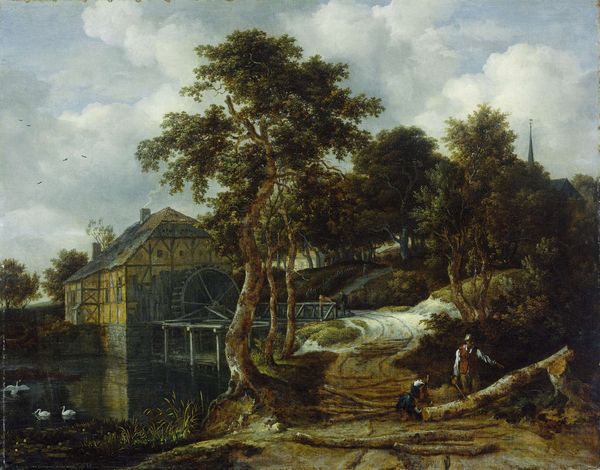
painting, oil-paint
#
dutch-golden-age
#
painting
#
oil-paint
#
landscape
#
oil painting
#
cityscape
#
genre-painting
#
watercolor
#
realism
Dimensions: height 15.5 cm, width 21.5 cm, depth 7.4 cm
Copyright: Rijks Museum: Open Domain
Curator: This is Petrus Gerardus Vertin's, "De Koepoort te Delft," likely painted between 1850 and 1892. Editor: There's a real serenity here, despite it depicting a rather busy waterway. The subdued palette makes it feel like a memory. Curator: Indeed. Vertin specialized in cityscapes and genre scenes. This oil painting, housed in the Rijksmuseum, offers a glimpse into everyday Dutch life of the period. The Koepoort, a gate in Delft, is the clear subject. Editor: It's interesting to consider the process of building that gate and the surrounding structures. Look at the texture of the stone. I imagine the labor involved was immense; quarrying, transporting, fitting each stone perfectly into place. Who were the masons and the bricklayers? Curator: Good point. We often overlook the social context. The gate would have been a significant point of entry, regulating commerce and controlling access to the city. Its very presence is about civic identity. Editor: Exactly, it wasn't simply erected. There was an investment of resources and power. I see that embodied in the paint itself too, how the thick application renders those material qualities of the building. The act of depicting itself underscores that inherent value of material in a society. Curator: It's more than just a static image. Vertin invites us to consider Delft as a nexus of human activity and power structures, particularly how city architecture was central to civic governance and mercantile exchange. Editor: And look how these quotidian activities - figures fishing and talking-are presented right alongside those symbolic structures, further entwined by a painter examining it all. The brushstrokes themselves feel tied to all those human connections. Curator: Yes. Vertin uses realism to create a tangible connection with the viewer, offering a nostalgic glimpse of a time and place. Editor: The subdued light definitely adds to that sense of nostalgia. It's beautiful how the everyday and monumental exist together in paint. Curator: A beautiful way to see Vertin's work, reflecting on labor, architecture, and the silent observers among it all. Editor: Definitely, seeing the gate through the hand of those builders changes how one engages the painting entirely.
Comments
No comments
Be the first to comment and join the conversation on the ultimate creative platform.

